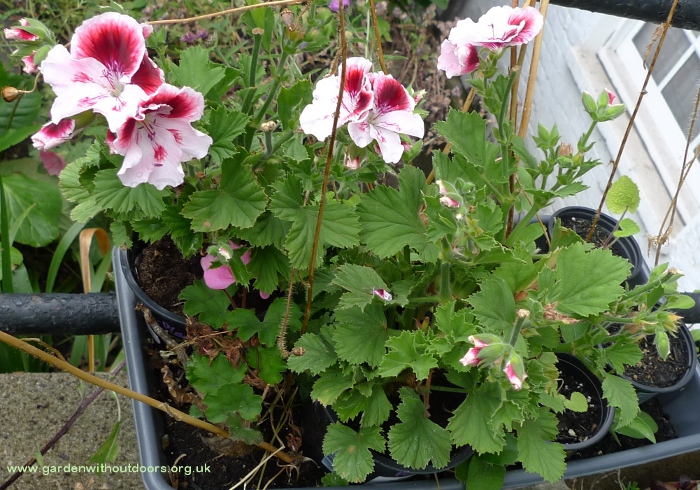the bees (bumble and honey) - and hoverflies - are loving the artichokes
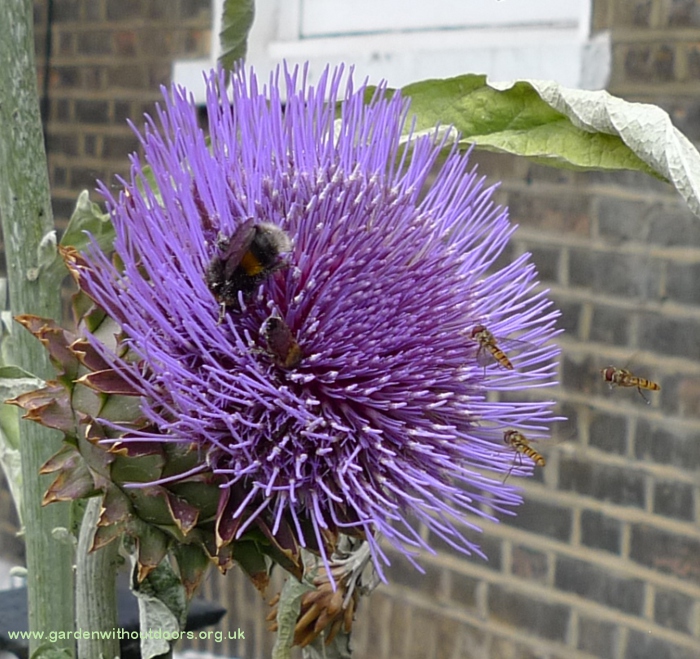
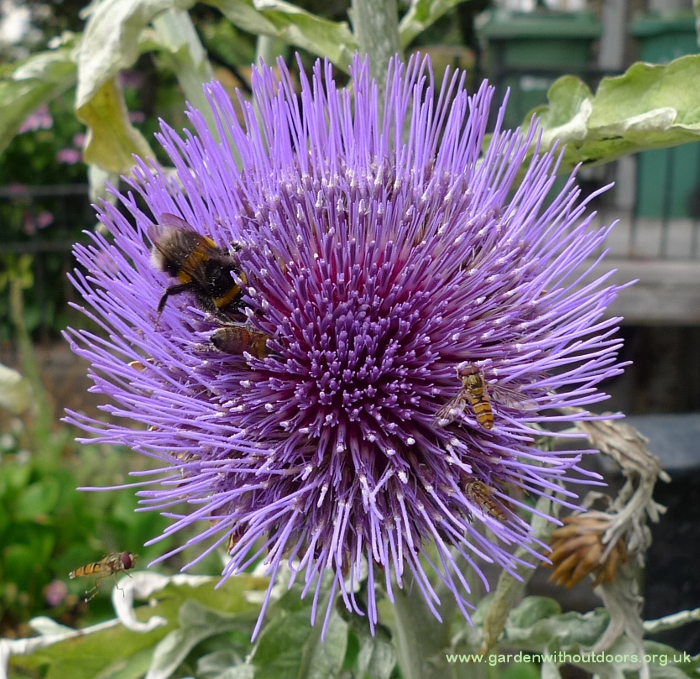
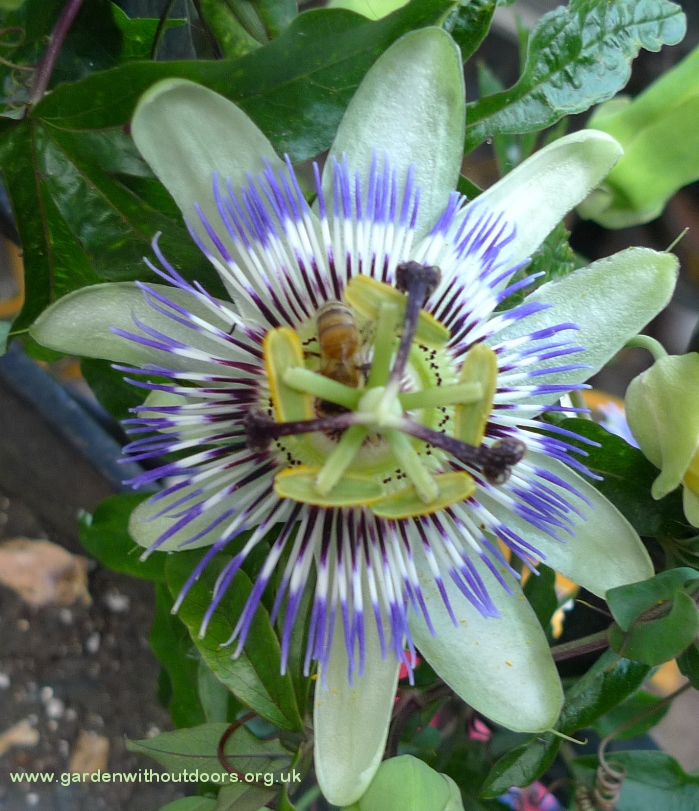
goat's-rue by the canal with a bee
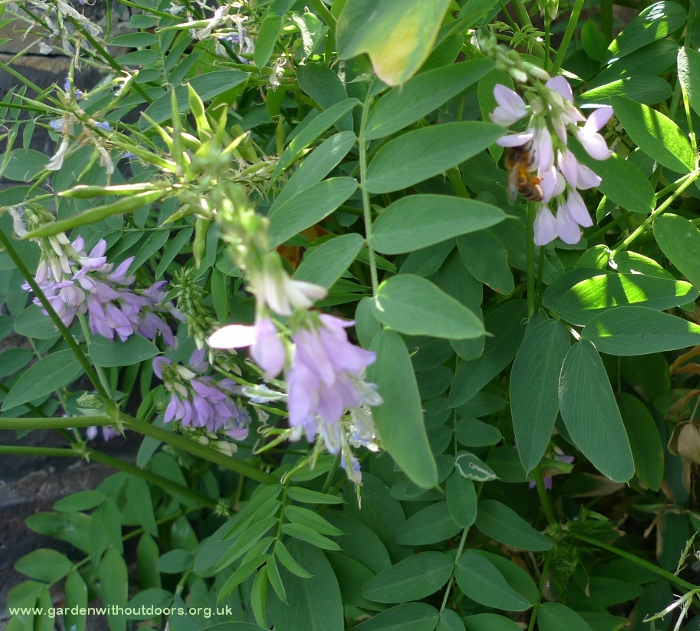
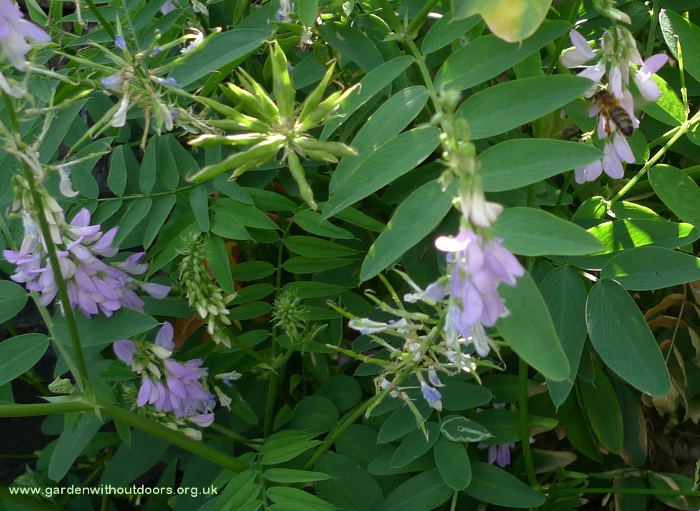
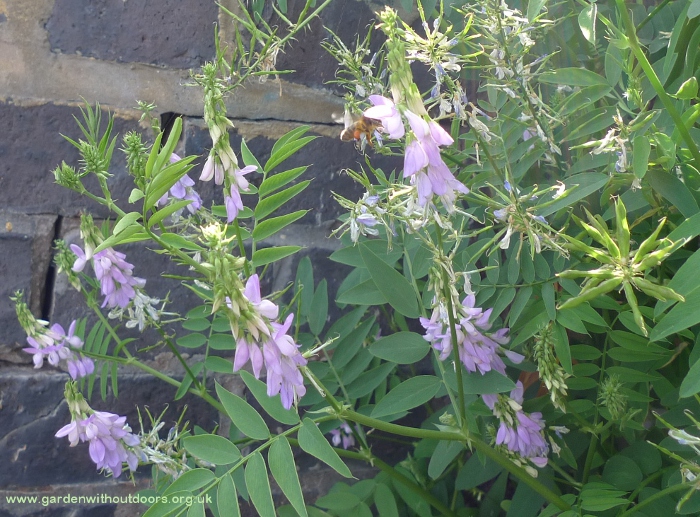

My greater knapweed seem to be struggling a bit, I guess the environment isn't great, a shallow flowerbed that isn't watered enough (I can't water the garden except for pots) but at least a bee is there.
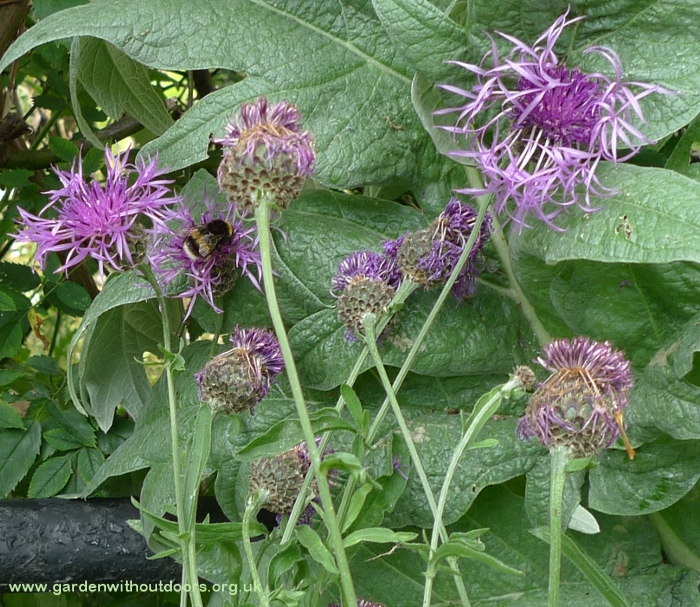
Two of the meadow cranesbill I grew from seed are finally blooming. I've had intermittent flowering from the few resulting plants.
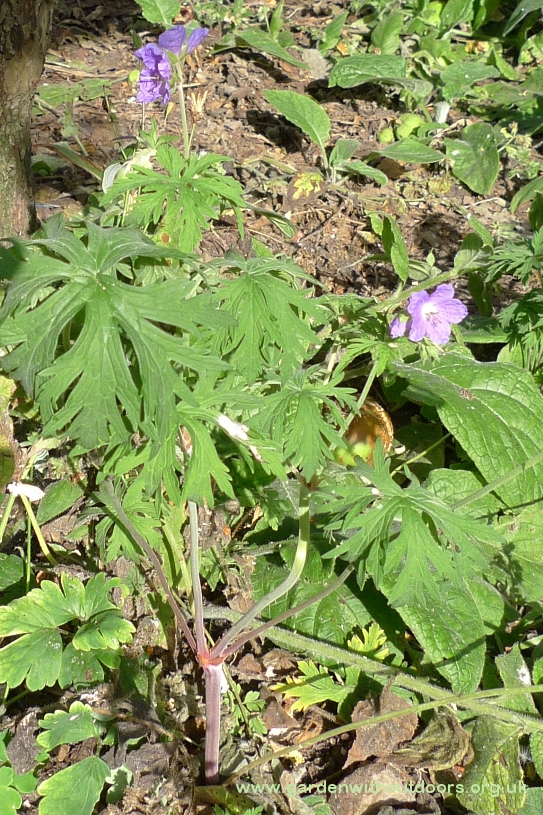
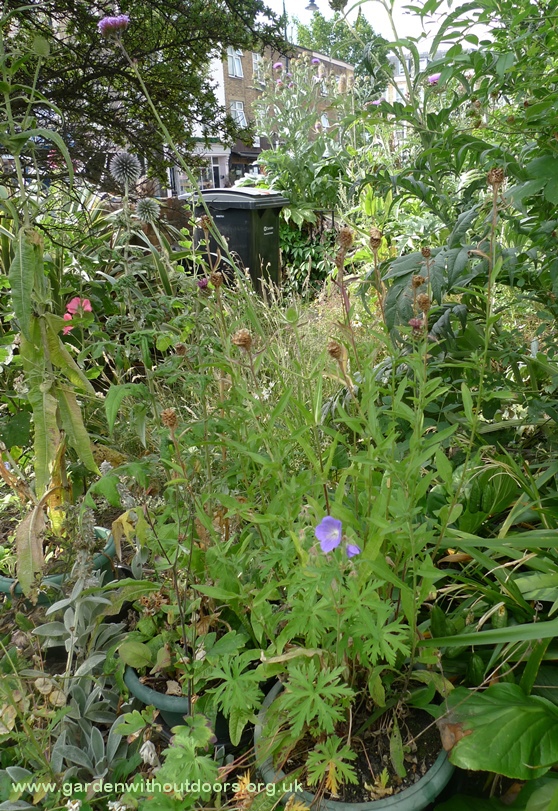
The Chinese lanterns turned out to be easy to grow from seed. A few in that trough, which ideally I'd put next door for my downstairs neighbour but the upstairs neighbour is so horrible and refused me access to the garden (even though it's shared with the downstairs neighbour). I can't carry it through her flat.
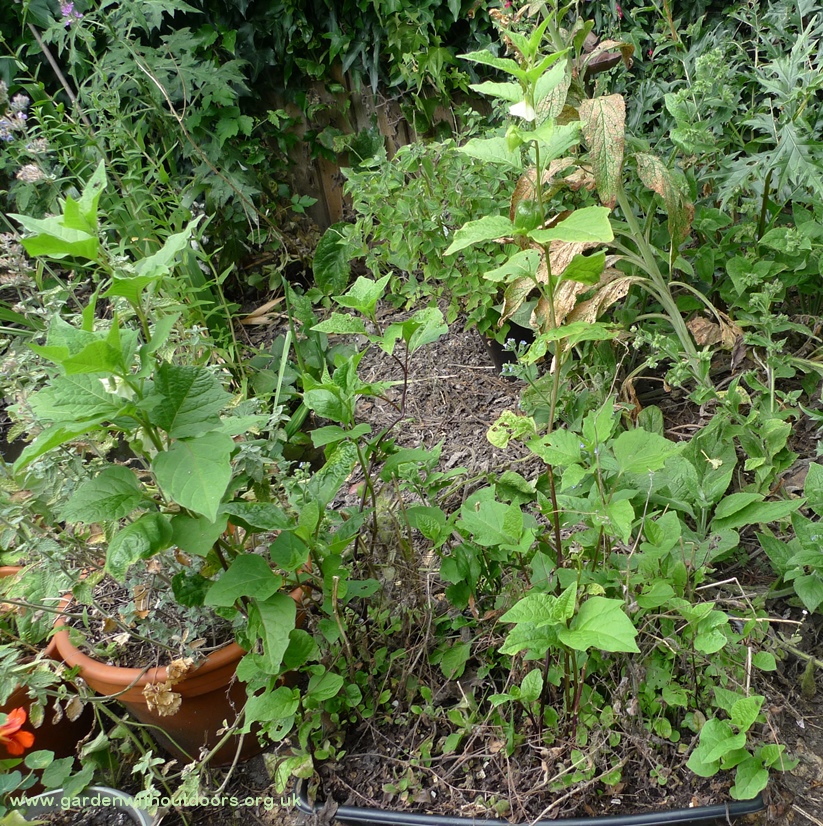
One of my teasels in the back garden is blooming. Some self-seeded next door but that neighbour cut them down (and everything else, he even sprayed weedkiller - I am so upset).
close-up of the flower

view of the entire plant
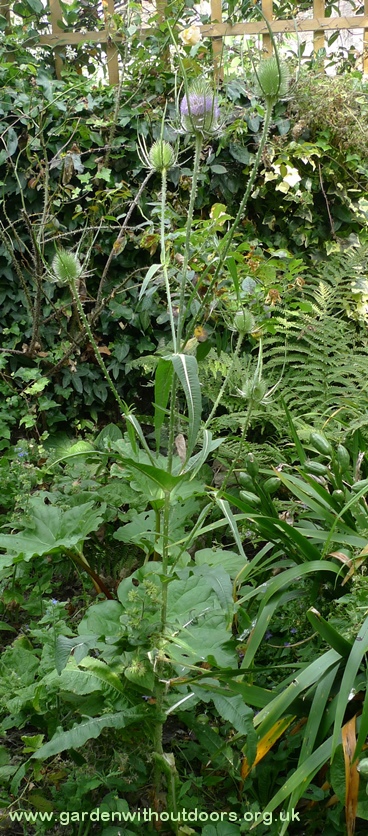
at least in the front next door he hasn't started cutting anything down but maybe it's only a matter of time, teasels and artichokes
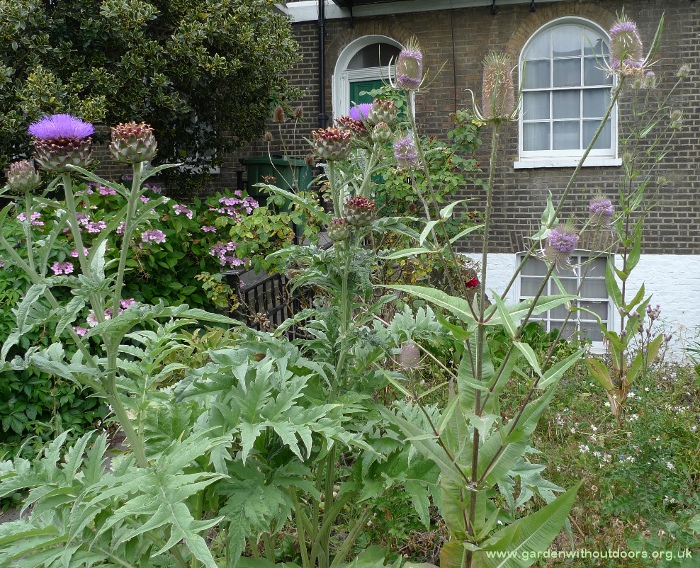
another view of them, not sure which is better
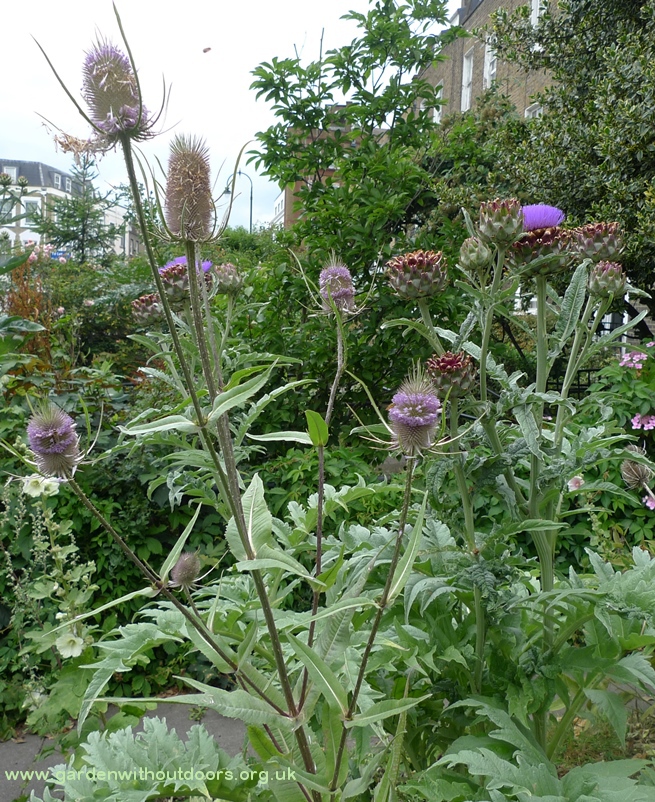
water collected in the teasel leaves

hollyhocks used to be the star of the garden next door but the hollyhock weevil seriously reduced numbers, I am trying to grow some replacements from seed but the slugs are seriously damaging the seedlings, I am going to try keeping them in pots until they are larger and maybe able to survive? mugwort to the left
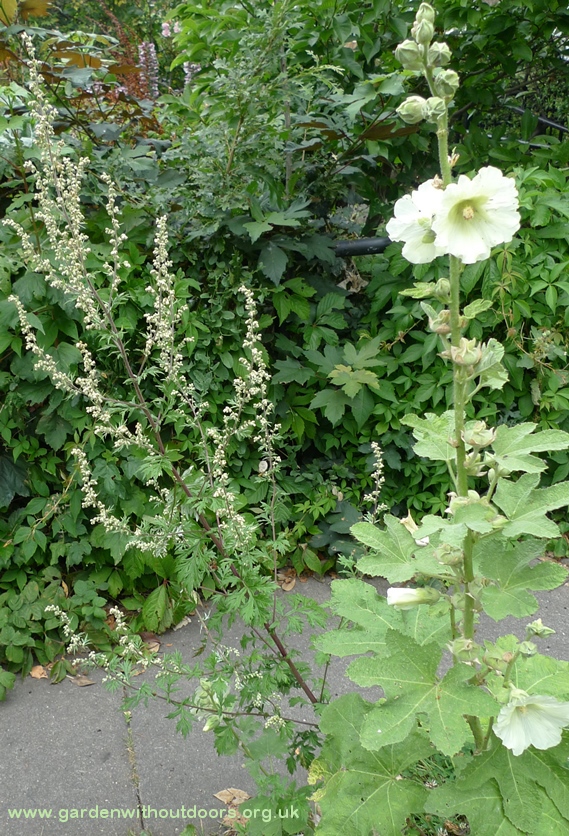
field scabious I grew from seed

After this garden was completely destroyed with building work, I sowed some green manure seeds onto the bare earth. These seed pods must be from the few surviving plants of the tare / vetch. I'm going to try sowing some of the seeds.
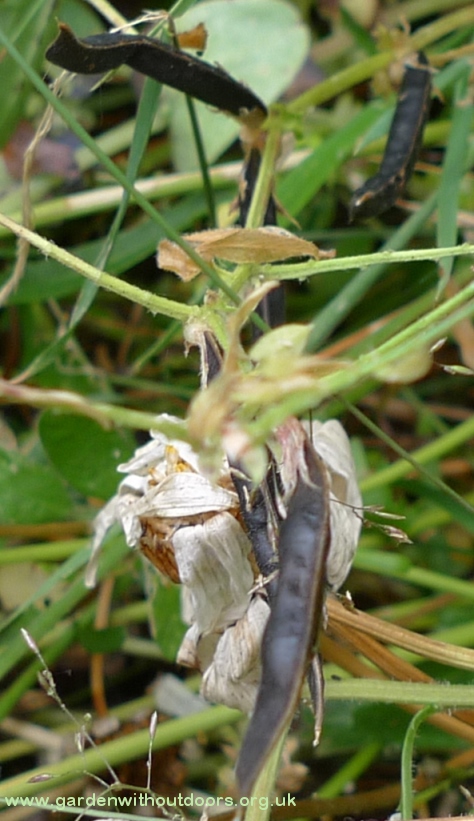
the verbascum thapsis appeared on its own
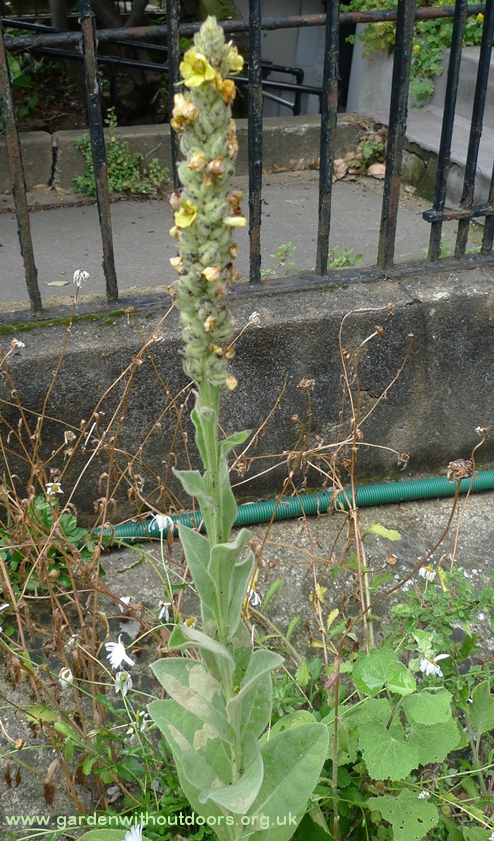
this poppy also found its way on its own
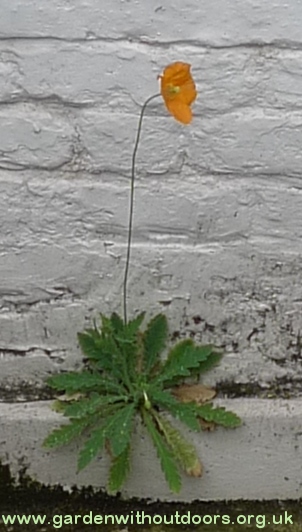
best buys from the garden centre - out of the skip, santolina and pelargonium
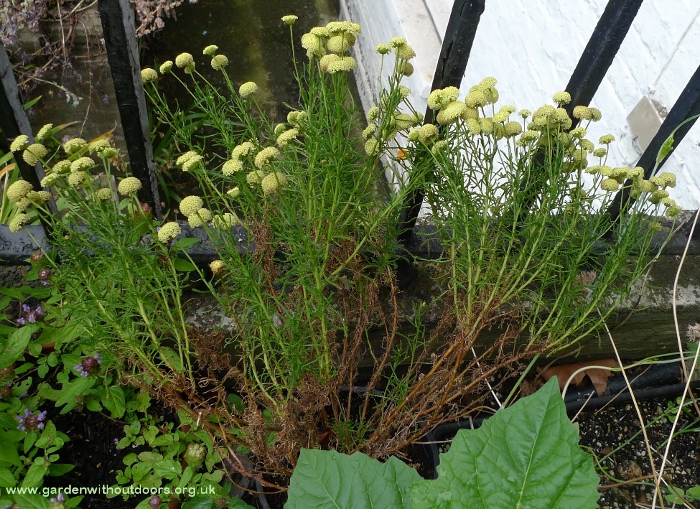
.